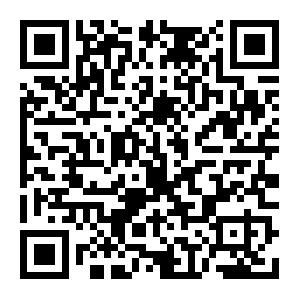基于模糊数学的太原市敦化灌区污灌土壤重金属污染评价
SOIL HEAVY METAL POLLUTION EVALUATION OF DUNHUA SEWAGE IRRIGATION AREA BY FUZZY MATHEMATICS MODEL
-
摘要: 采用原子吸收和原子荧光分光光度法测定了太原市敦化污灌区95个表层土壤样品的8种重金属含量,并对污灌土壤的pH值、阳离子交换量、容重等理化性质进行分析,在此基础上采用模糊数学方法评价了其土壤环境质量,探讨了灌区土壤重金属的分布特征及污染状况.结果表明,土壤重金属砷、铜、锌、镍、汞、铬和铅含量值都在国家二级标准值范围内,平均含量分别为6.165,39.198,114.758,37.225,0.171,28.249和37.468mg·kg-1,重金属镉的含量高于国家二级标准值,平均含量高达1.247mg·kg-1;敦化灌区土壤的平均pH值为8.01,属弱碱性土壤,平均阳离子交换量为80.96cmol·kg-1,表层土壤有机质含量在1.27%—2.18%之间;模糊数学评价结果得到灌区土壤环境质量为三级水平,各个采样点的污染程度为董家营村西>西谷乡东>王答乡南>孟封镇北>鹅池村南.Abstract: The content of heavy metals in top soil samples(95)from Dunhua sewage irrigation area was measured using AASand AES. The physical property of the samples was also analyzed. The soil environmental quality was assessal by a fuzzy mathematical model, and the distribution and pollution characteristic of soil heavy metals were discussed. The results showed that the mean content of As, Cu, Zn, Ni, Hg, Cr and Pb in these top soil samples were 6.165, 39.198, 114.758, 37.225, 0.171,28.249 and 37.468mg·kg-1, respectively. Content of Cd(1.247 mg·kg-1) was higher than the standard value; The average pHvalue of Dunhua irrigated soil was 8.01, the average cation exchange capacity was 80.96cmol·kg-1, organic matter content of surface soil was 1.27%—2.18%; The soil environmental quality was of the third grade, Dong Village West was the most seriously polluted area by Fuzzy mathematical model, followed by West Valley Town,Wang Da South, Meng Feng Town and Goose Pond Village South.
-
Key words:
- Dunhua sewage irrigation area /
- fuzzy mathematical model /
- pollution evaluation /
- soil /
- heavy metals
-
[1] 李学垣.土壤化学[M]. 北京:高等教育出版社,2001:23-30 [2] 严莎,凌其聪,严森,等.城市工业区周边土壤-水稻系统中重金属的迁移积累特征[J].环境化学,2008,2(27):226-230 [3] Hu K L, Zhang F R, Li H. Spatial patterns of soil heavy metals in urban-rural transition zone of Beijing[J].Pedosphere,2006, 16(6):690-698 [4] Jamali M K, Kazi T G, Arain M B. Heavy metals from soil and domestic sewage sludge and their transfer to Sorghum plants[J].Environ Chem Lett, 2007, 5:209-218 [5] Golia E E, Dimirkou A, Mitsios I K. Levels of heavy metals pollution in different types of soil of central Greece[J]. Bull Environ Contam Toxicol, 2008, 80:206-210 [6] 张乃明,李保国,胡克林.太原污灌区土壤重金属和盐分含量的空间变异特征[J].环境科学学报,2001,21(3):349-353 [7] Onkal-Engin G, Demir I, Hiz H. Assessment of urban air quality in Istanbul using fuzzy synthetic evaluation [J]. Atomospheric Environment, 2004, 23:3809-3815 [8] 翟航,卢文喜,杨威,等.模糊数学和污染指数法在土壤重金属污染中的应用[J]. 土壤,2008,40(2):212-215 [9] 息朝庄,戴塔根,张惠军,等.湖南湘潭市土壤重金属污染调查与评价[J]. 水土保持通报, 2008, 28(03):133-138 [10] Ortega M P, Siebe C, Becard G, et al. Impact of a century of wasterwater irrigation on the abundance of arbuscular mycorrhizal spores in the soilofthe Mlezquital Vally of Mexio[J].Applied Soil Ecology,2001,16:149-157 [11] Rodriguez lado Luis, Hengl Tomislav, Reuter Hannes I. Heavy metals in European soil: a geostatistical analysis of the FOREGS Geochemical database[J].Geoderma, 2008,148:189-199 [12] 陈怀满.土壤中化学物质的行为与环境质量[M]. 北京:科学教育出版社, 2002 [13] 石晓翠,钱翌,熊建新.模糊数学模型在土壤重金属污染评价中的应用[J]. 土壤通报, 2006, 37 (2):334-336 -

 点击查看大图
点击查看大图
计量
- 文章访问数: 865
- HTML全文浏览数: 804
- PDF下载数: 435
- 施引文献: 0



 下载:
下载:
